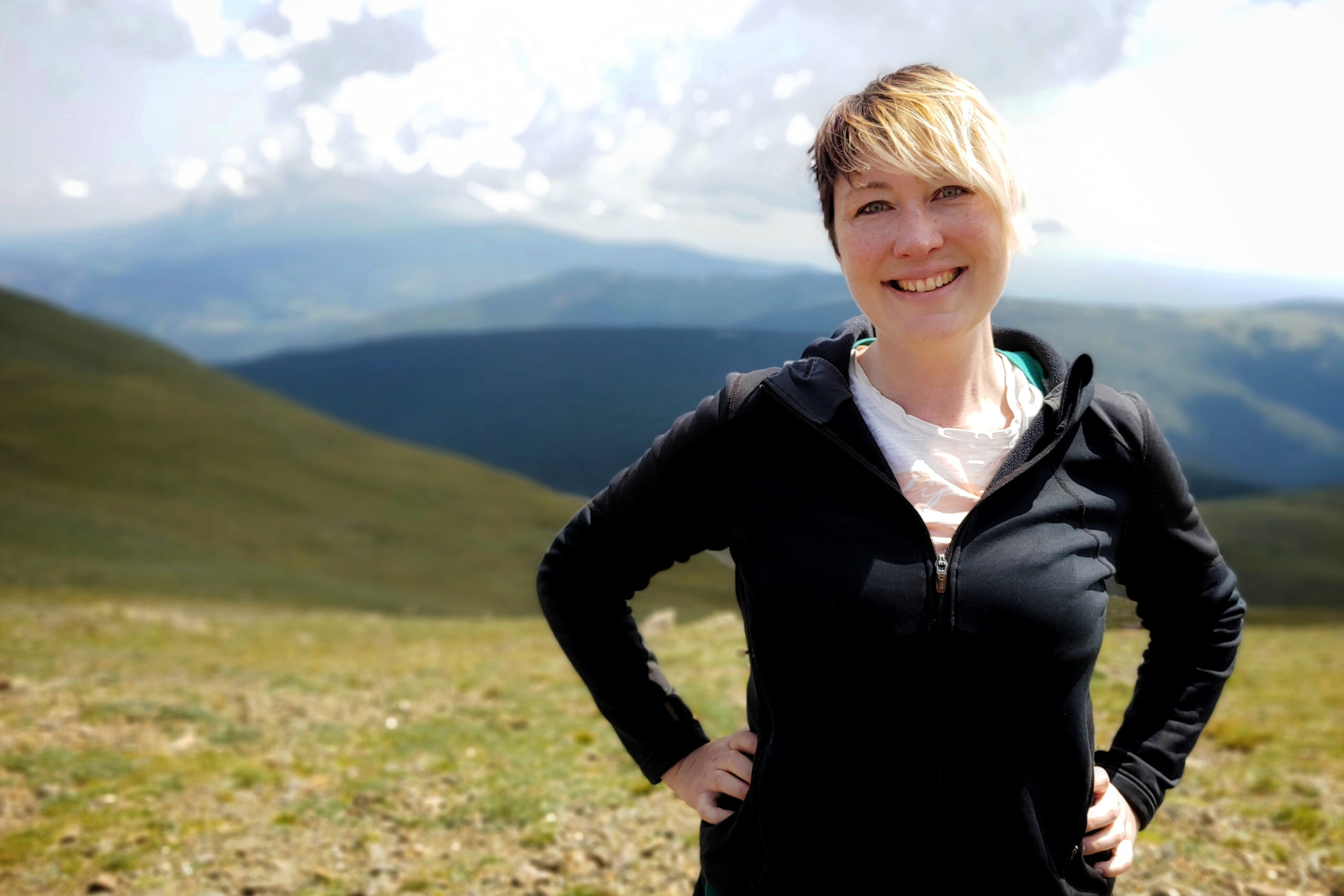Science Moab talks with Jennifer Ackerfield, head curator of natural history collections and the associate director of biodiversity research at the Denver Botanic Gardens
Science Moab speaks with Jennifer Ackerfield, head curator of natural history collections and the associate director of biodiversity research at Denver Botanic Gardens, about her quest to understand thistle biodiversity. Cirsium scopulorum, or mountain thistle, was long thought to be the only species of thistle occurring in the alpine tundra. Molecular, morphological, and geographical evidence now support the recognition of many species of thistles in the alpine tundra of the Southern Rocky Mountains, including a unique species right here in the La Sal Mountains of Southeast Utah.
Science Moab: Can you introduce us to your research?
Ackerfield: I wanted to create the first full comprehensive study of thistles across North America, which was a huge undertaking. There’s a lot of variation and species. There are about 100 species of native thistles in North America. Oftentimes it’s really unfortunate for thistles because when people picture thistle, they picture the bad ones. They picture the invasive, weedy species that come in and take over and are not good for our ecosystems and are bad. But our native thistles are actually really important components of our landscapes. They are important resources of food for many pollinators for animals like pika, which eat alpine thistles. They have a lot of important ecosystem functions.
Science Moab: Cirsium Tukuhnikivatzicum is a species of thistle only found in the La Sal Mountains. How and when was it first noticed? How do you know it’s a different species?
Ackerfield: In the early 1900s, Per Axel Rydberg, a botanist at the New York Botanical Garden and an expert on the flora of the Southern Rocky Mountains and adjacent plains, did a trip out to Utah and made a collection of this thistle. At that time, there was another thistle that had been described called Cirsium scopulorum, which is a mountaintop thistle basically. Since they were on a mountaintop, and it looks sort of similar to this thing, and resources were limited, they labeled it as Cirsium scopulorum. Also when you collect thistles, they dry brown and you can’t really capture the overall appearance and shape and size really is obscured. Once you have collected that specimen, pressed it flat, dried it and put it on paper, you lose a lot of the details.
But I was not convinced that these were all the same thing, since they are actually very distinctly different in appearance and each occupies its own distinct range. So I decided to test this hypothesis that they were all the same species. I had samples from all throughout the Rocky Mountains in the alpine and I included the La Sal thistle in this because I thought that for sure, it was a very odd outlier, and I did some systematic work on it. I extracted DNA, sequenced some genes, and then analyzed those so that you can see the relationships of all of the different species to each other—which are more closely related, which are not. I found that the La Sal thistle was clearly not Cirsium scopulorum, and in fact, they were not closely related at all.
Science Moab: Did you parse out different species within the alpine of Colorado as well?
Ackerfield: I actually was able to pull out several other morphologically distinct populations that really had just been hiding in plain sight. All had been seen but they were just calling them all Cirsium scopulorum. But when you have all of these lines of evidence, genetic evidence, geographic range, morphological evidence, you can’t really deny the fact that they’re actually distinct species.
Science Moab: What kind of process do you have to go through to claim a new species? Is it a big deal in the botanical world?
Ackerfield: I do actually think it’s a big deal, because what we’re doing is documenting undescribed biodiversity. When we think about it from a management standpoint, now we know that we have this species that is unique to this area and this is the only place in the world that it’s found. If we didn’t know that we might manage that differently than we do. We might pull them all out of the ground. But now, we know that this is actually a really cool, unique species to this place only that we’re going to manage a little differently. That’s why I think it’s really important to be able to describe these new species accurately, with as much evidence as possible to back that up.
Science Moab: How did you come up with the name Cirsium Tukuhnikivatzicum?
Ackerfield: I thought about the name for a long time because you don’t get a lot of opportunities to name new species—you want to make it a meaningful name that conveys something about the appearance or the place. I started thinking about the Ute and their use of the land and what around there pays homage to that. The word Tukuhnikivatz, the place where the sun sets last, came to mind and I thought, that’s beautiful.
Science Moab is a nonprofit dedicated to engaging community members and visitors with the science happening in Southeast Utah and the Colorado Plateau. To learn more and listen to the rest of this interview, visit www.sciencemoab.org/radio.




